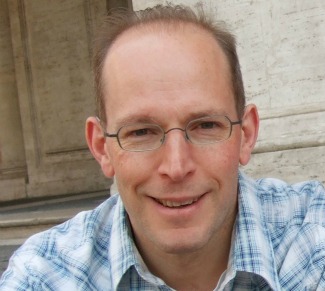History of Science

"We know that images can deceive"
The history of science once tend to the study of texts while forgetting about the pictures. But scientific practice produces a wide variety of visual representations and their study provides an excellent basis for understanding the formation of scientific knowledge. This was the theme of the 6th. European Spring School on History of Science and Popularization in Mahon, organized, among others, by the Centre for the History of Science at the UAB (CEHIC). Nick Hopwood, senior lecturer in the Department of History and Philosophy of Science at the University of Cambridge and an expert on visual representations in science, was invited there, and we interviewed him.
Why do you think it is important to study images in history of science?
Open any journal, textbook or webpage, watch a TV programme, visit a museum—no one can doubt that visual images are central to science today. History of science provides a long-term perspective on how and why this is so.
What can we learn from them?
We know that pictures can deceive, but science images are often especially hard to challenge. Among other things, historical research cultivates a critical perspective.
When did you become interested in this field? And how?
I came to history of science in the early 1990s after postdoctoral research in developmental biology. Scientists skim journal articles by looking through the figures and reading the captions, so it was always obvious to me that images are crucial. I also already had an insider’s understanding of the work that goes into making them. Historians and sociologists of science then taught me how to analyse the production and uses of different types of image in different historical periods.
What is your more specific field of research?
I work mainly on images of embryos. If we take embryonic development for granted today, it is a result of embryologists’ hard work. They have produced series of images representing progressively more advanced stages that stand for the course of a human pregnancy and, through the once-popular theory of recapitulation, once also stood for the history of life on earth. Embryologists made these series by collecting specimens, making vivid images, selecting and ordering them for publication or display, and promoting embryological interpretations against competing views. There is more about this in Making Visible Embryos www.hps.cam.ac.uk/visibleembryos, an online exhibition that Tatjana Buklijas and I produced a few years ago.
How do you think that your work has contributed to the history of science?
I have been interested more generally in the different media of images in science. In particular, I helped draw attention to the significance of three-dimensional models. I found that these had played a particularly important role in embryology around 1900 and colleagues discovered parallel cases in their own fields. So while historians had tended to ignore 3-D models, or treat them as merely didactic, we argued that they have played key roles in research as well as teaching, in spite of the extra challenges of production, distribution and display. Models have been significant and controversial in their own right, and have also profoundly shaped illustrations in print. I did a highly illustrated book on Embryos in Wax (Whipple Museum, 2002) and Soraya de Chadarevian and I edited a volume on Models: The Third Dimension of Science (Stanford, 2004), which deals with disciplines from anatomy to molecular biology, natural history to mathematics and chemistry to economics.
You are finishing a book, Pictures of Evolution and Charges of Fraud, about Haeckel's embryos. What are these and could you explain your thesis to a wide audience in a few words?
I chose this case to try to understand better how and why pictures succeed or fail, how some survive for decades in textbooks, while others disappear fast. The German zoologist Ernst Haeckel included embryological illustrations in the books that took the first Darwinist system to the reading public from the late 1860s. Similarity was evidence of common descent. But hostile colleagues and religious enemies accused him of forgery, including to make the human embryos look more like those of dogs than they really are. By World War I the pictures had been debated in hundreds of articles in newspapers and magazines. Yet they still went on to a career in twentieth-century textbooks, especially in American high schools and colleges, as the standard illustrations of comparative embryology. Until the late 1990s, that is, when controversy blew up again and creationists forced them out. This raises the question: How could the most controversial pictures in the history of science become some of the most standard? The answer can tell us much about how icons of knowledge are made.
Clara Florensa
Centre d'Història de la Ciència
Àrea de Comunicació i Promoció
2025 Universitat Autònoma de Barcelona
B.11870-2012 ISSN: 2014-6388
